| |
 |
|
|
|
|
It is 2.2km journey from Hsi Yang Junior High School to Pure Garden. Walking along the Cipi Canaland paddy field on the road, we arrived at Mr. Cheng Wu's Pure Garden and big green trees came to our sight and are very vivid. Now, let’s look at the plants and animals in Pure Garden! |
| |
| I. Introduction to Pure Garden
Pure Garden consists of five major zones A, B, C, D and E.
| A |
Diospyros philippensis zone |
 |
| B |
Zone for planting Taiwan's first-class native trees: Formosan Michelia, Taiwan Ebony, Chinese Pistache, Taiwan Zelkova and ecological pond |
 |
| C |
| D |
The ecological pond and the small streams of Cizai Canal |
 |
| E |
Organic paddy field |
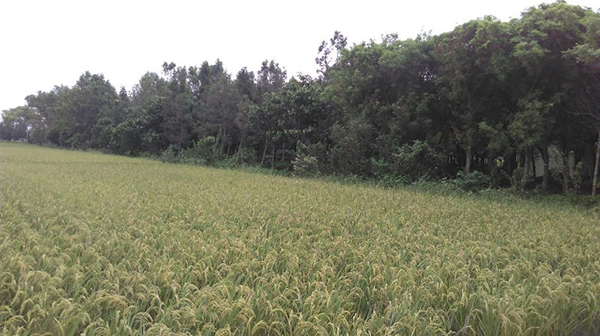 |
|
| TOP |
II. Zone view
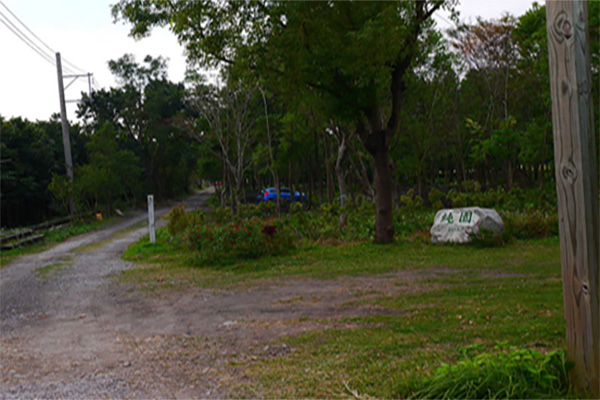 |
Entrance of Pure Garden |
Pictures of Zone A:
Zone B and Zone C:
The following figure shows an ecological pond - there are also some animals (Zone B) beside the pond.
The picture below shows Pure Garden’s work studio, where Pure Garden Concert was held.
The picture below shows Zone D and there is an ecological pond and small stream of Cizai Canal.
The picture below is Zone E: "The paddy field using nature farming is organic field which produce "Shangshui Rice!"
|
| TOP |
III. Afforestation
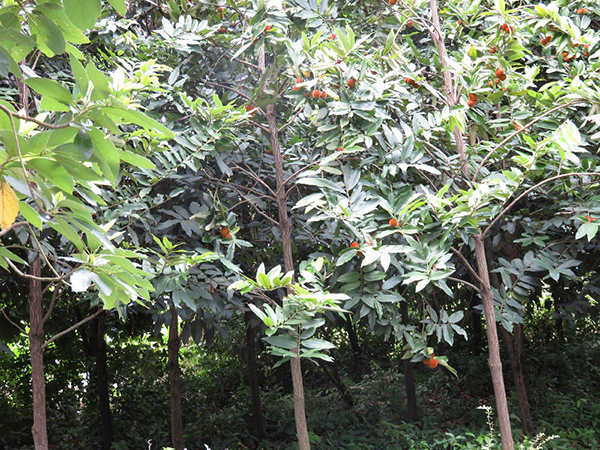 |
| The above picture shows the densely planted Taiwan ebony in Pure Garden. The deep-rooted Taiwan ebony can firmly grasp the soil to prevent loss of water and soil. |
Mr. Cheng Wu is over 70 years old. He has made many contributions to Xizhou Township. Mr. Cheng Wu planted trees instead of paddy more than 10 years ago. He has planted many trees in Pure Garden, and those trees are all first-class tree species in Taiwan. This is Mr. Cheng Wu's persistence.
In the Garden with an area of about 2 ha. Mr. Cheng Wu has planted many first-class native tree species. He wants to present the trees one day, and to be changed from "a poet who plants trees" to " poets who presents trees."
Mr. Cheng Wu's three principles of planting trees: Locality, shade and futurity, and futurity means the bigger the more precious. We introduce these three principles in the two aspects: Cheng Wu's Persistence in planting trees - No chemical fertilizer, manual weeding; Suitable place and suitable species. |
| TOP |
IV. Mr. Cheng Wu's persistence
The weeds in Pure Garden are removed manually. Mr. Cheng Wu wanted these animals and insects that had left or disappeared to come back again, so Mr. Cheng Wu insisted on using no chemical pesticides or fertilizers. Fallen leaves are the best fertilizer for plants! If chemical pesticides are used for long time, the land may "die" and many insects and animals may not live there.
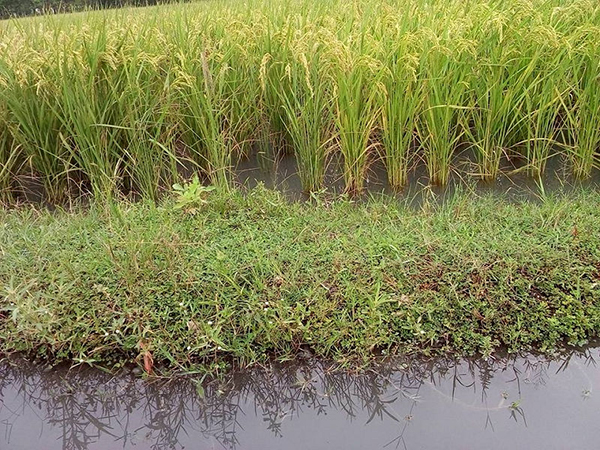 |
| In the paddy field beside Pure Garden, we saw many weeds growing on the ridge. |
|
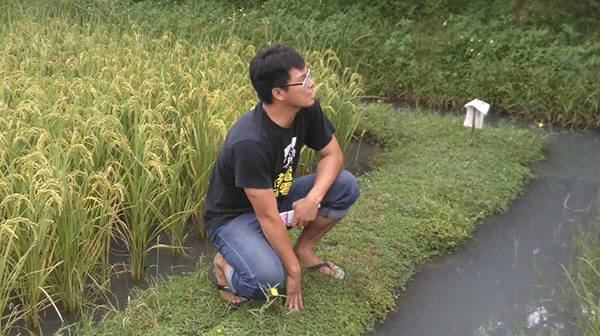 |
| A farmer said that he may let the grass grow on the ridge and would not spray pesticide in order to keep the vitality of the earth. |
|
|
| TOP |
V. Tree Species
| Scientific name |
Photo |
Scientific name: Pistacia chinensis Bunge
Common name: Chinese pistache
Features: Deciduous trees with flaky bark.
Ecological distribution:
It mostly grows in low altitude river valleys and rocky and mountain areas along the sea in the south of Hsinchu and Hualien. It is a deep-rooted with high sprouting ability and tolerance to barren soil, especially sulfur dioxide and soot, and dislikes shade and likes light with long life time. However, the old trees' heartwood often decays and become hollow, so the heartwood.is rotten
Purpose:
The young leaves can be pickled and eaten, and the tender leaves can also be used to make tea, which is called oriole tea. The fruit can be used to make fuel or lubricating oil. The timber is hard and dense with aesthetic patterns. |

Photo link: http://4.bp.blogspot.com/
_-AhzPvnkmX8/TCiuj8aiWgI/AAAAAAAAFZY/gYTwgBEhy-s/
s1600/DSCI0067.JPG
|
Scientific name: Cinnamomum micranthum Hayata.
Common name: Camphor tree
Features: Evergreen big trees with deep furrows in bark.
Ecological distribution: It is native to Taiwan. It mainly grows in broadleaf forests at low and middle altitudes. Xitou, Wulai and Alishan are all famous growing areas.
Purpose: It can produce good quality timber for building and carving, and of course it can also be refined into shoghu oil. |
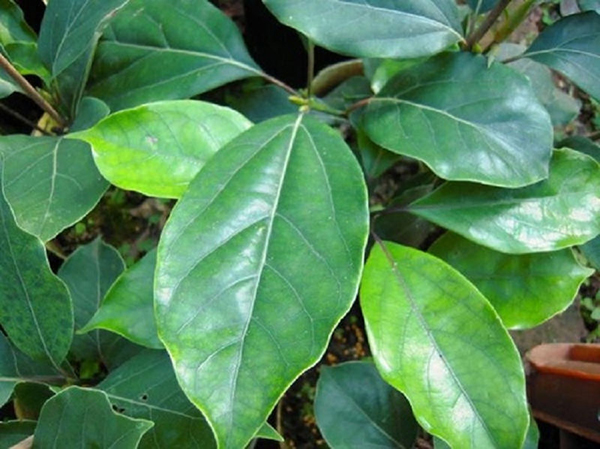 |
Scientific name: Diospyros discolor Willd.
Common name: Mabolo tree.
Features: Evergreen big trees; with dark brown bark and dense foliage with greyish branches initially pubescent. It has yellow and white flowers, which bloom from March to May, and bears fruit in September.
Ecological distribution: only in Orchid Island and Green Island in Taiwan.
Purpose: It has dark heartwood. The tree, which is one kind of ebony, is hard and strong. It provides valuable timber. The fruit has dense brown hair and is edible when ripe. The plants can also be used for greening and beautification. Because of their strong wind resistance, they can be used as seashore windproof trees. |
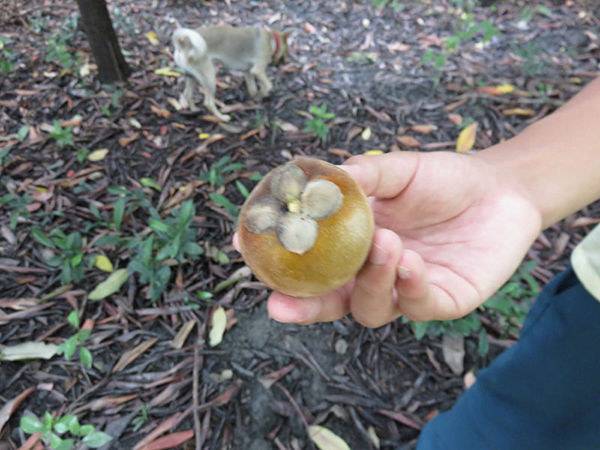 |
Scientific name: Zelkova serrata (Thunb.) Makino. Common name: Taiwan Zelkova.
Features: The crown of the tree is full and round, and inverted triangle. In autumn and winter, leaves turn red and yellow before falling. They can beautify gardens and roadside. The newly sprouted leaves in early spring are often bright red.
Ecological distribution: low altitude broad-leaved forest and arid mountains and plains.
Purpose: In autumn and winter, leaves turn red and yellow before falling. They can beatify garden trees and roadside. The wood is hard and is not prone to crack. Rukai people use the tree trunks to make pestles, hoe handles, table boards and wheels. Beech wood is bright red and reddish brow, thick and hard. It can be easily flattened. After being finished, it can show fine luster. It is the best material for buildings. It can be used to make expensive floors and stair handrails, carvings, plywood, decorative materials. People also like to carve Buddha statues with it. It can be also used to make furniture, tableware and golf club head. It is good and popular wood. As the leaf is small, green and durable, it can be crafted as a garden pot. |
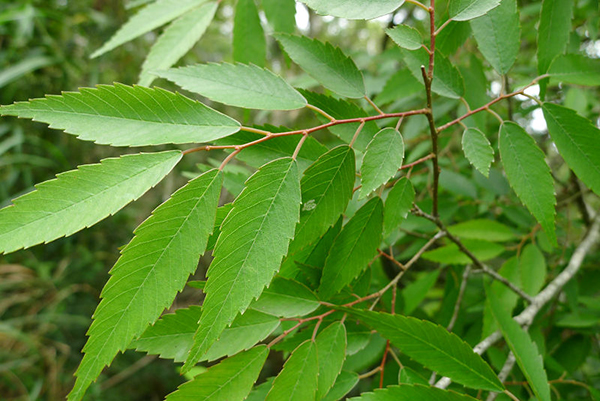 |
Scientific name: Michelia compressa (Macim.) Sangent.
Common name: Michelia compressa.
Features: Evergreen big trees; with elliptic and lanceolate trees; white flowers and red seeds.
Ecological distribution: tall and distributed in low to middle altitude broad-leaved forests on the island, and also in Japan.
Purpose: It provides good quality timber and is first class deciduous tree. It has graceful form and is evergreen all the year round, with white flowers and fragrance. It is also an important native tree species. |
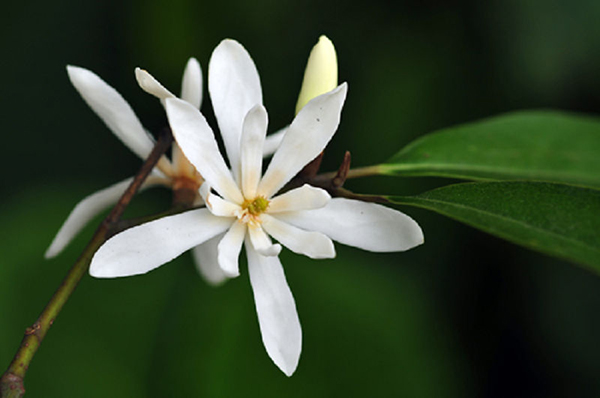 |
|
| TOP |
VI. Animals
Brown Shrike
It was the first winter migratory bird to arrive in Xizhou. In the past, it was roasted as food in Hengchun, so it was overhunted and endangered. Now, it has become a conservation animal.
Pelodiscus sinensis
It is commonly called turtle. It usually stays in mud during days and comes out for food at night. It is a good helper for farmers because it can eat snails.
Amphiesma stolatum
It is also called water snake and often lives in water. If the snake can be found near home or in paddy fields, this means that the water in this environment is very clear and not polluted. If there are many the snakes in the wetland in Zhenliao, this means that the local water quality is not polluted.
Dragonflies and damselflies
Their larvae are aquatic gnats. If dragonflies can survive, water environment must be healthy. Therefore, the presence of dragonflies in this area means that the water and environment are not polluted.
Rana limnocharis
It is common in rural life. The older generation call it "paddy frog or Tianhazai". They are often confused with Chinese edible frog. Although they can survive in harsh environment, paddy field is still their best breeding environment.
Bat House
In Pure Garden, this is a small house where wild bats live. It is also a place where many schools study biodiversity. Around Pure Garden, there are organic paddy fields invested by some farming companies which can also help wildlife return to this land.
|
| TOP |
VII. Visit to Tree Garden
Although our interview was not long, we learned more about Mr. Cheng Wu's persistence and care of Taiwan's native species and some ecology knowledge in a few hours. Through Mr. Cheng Wu's warm and humorous introduction, we unconsciously learned this pithy formula: "Yi zhi wu mao ji, qi huang niu bei shang"(literally a black-haired chicken, riding on a yellow ox). "wu"(means black) stands for Formosan michelia, "mao" (means hair, pronounced like Mao in Chinese) stands for Mao persimmon; "ji" (means chicken) stands for Taiwan Zelkova, "huang"(means yellow) stands for Chinese Pistache and "niu"(means ox) stands for camphor tree. These Chinese characters pronounce like the Chines names of the plants. It takes ten years to grow into a tree and a hundred years to become a timber. Thesee five species are called " Taiwan's five species of deciduous trees". The formula can make us remember the native species of Taiwan in Pure Garden, but also understand the importance of ecology and the methods of caring for native species.
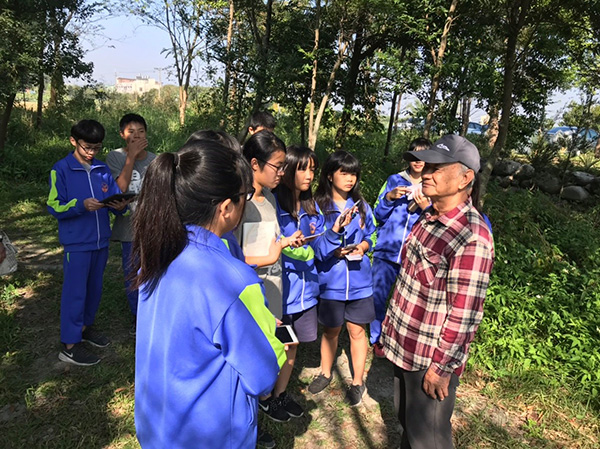 |
Most of Taiwan's native tree species have been invaded by exotic tree species, and the awareness of environmental protection has gradually disappeared. In recent years, the scope of tree felling has gradually increased. Trees have disappeared one by one. Mountain areas have been built into some buildings and land for farming crops, resulting in imbalance of soil and water conservation. From this, we have realized the importance of ecology, so we have decided to actively promote tree planting to make the earth look new.
After the visit, Mr Cheng Wu presented several pots of native saplings. We planted these saplings on campus with our classmates to implement Mr Cheng Wu's idea.
|
| TOP |
VIII. Visit to Ecological Pond
After visiting the tree garden, there is an aquatic pond (Photo 1) beside the tree garden. The introduction staff taught us to put floating island in a large pond. We experienced DIY planting of aquatic plants. Initially, everyone was reluctant to go to the water before making the floating island because we had to go to the field road and then get into the water to place the floating island.
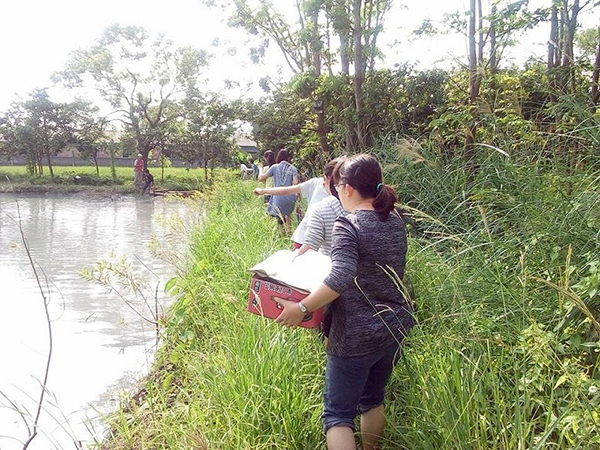 |
| A path that is difficult to walk on |
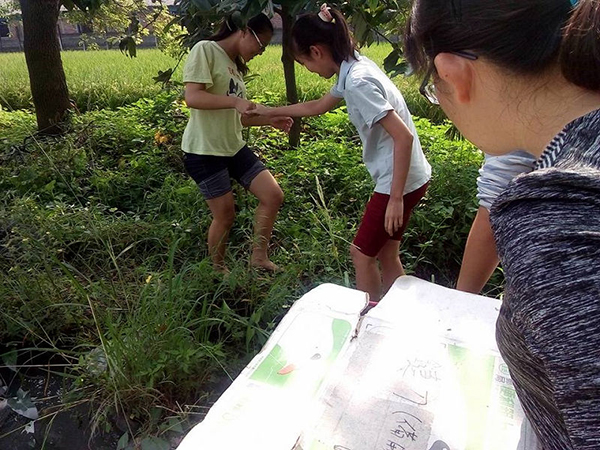 |
| We helped each other to cross the ridge |
Originally, we thought the water in the pond was deep. The soil was slippery when we got in the water, and we were afraid of falling into if we were not careful. When we got in the water, we found that the water was not deep but also cool. We were on a floating island made of wood, on which there are many plants, mainly ginger lily.
Since there was no soil on the floating island, we must fill it with soil and plant the saplings well. However, the soil is uneven in weight, it sunk all the time. In order to finish the task, we needed to divide the work and cooperate. When the teacher told us what to do and how to fill the soil, we were all very focused and doing them very seriously because we may have a sense of accomplishment if our plants blossomed and borne fruit. After completion, the teacher asked us to put the floating island in the middle and told us our results can be seen after two or three weeks.
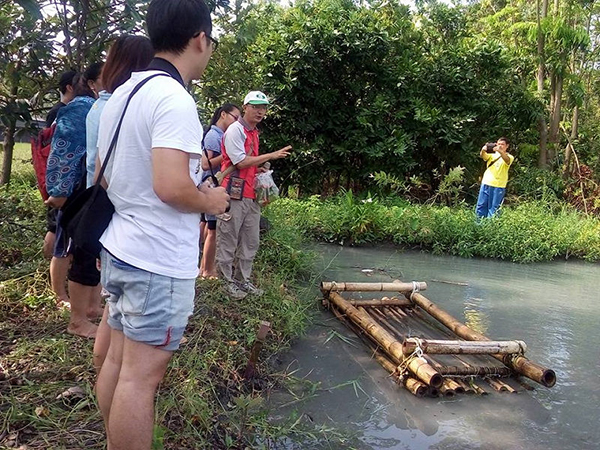 |
| This is floating island |
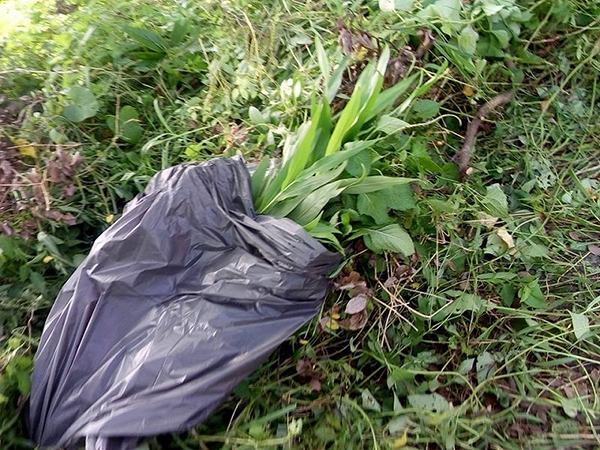 |
| Grow plants on floating island |
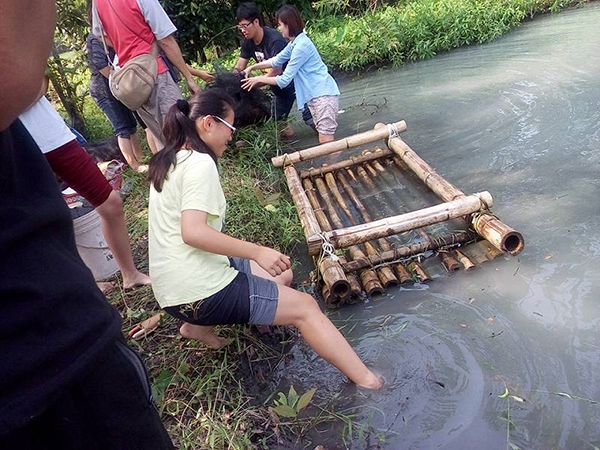 |
| Get in the water! |
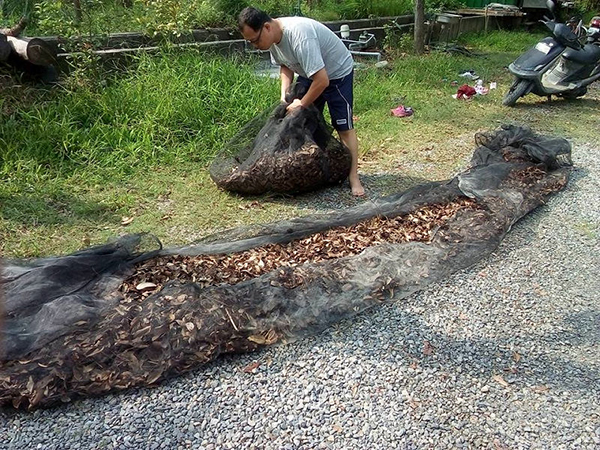 |
| This is the fallen leaves buried in the floating island, collected from Pure Garden. The elder brother actively bagged the fallen leaves. |
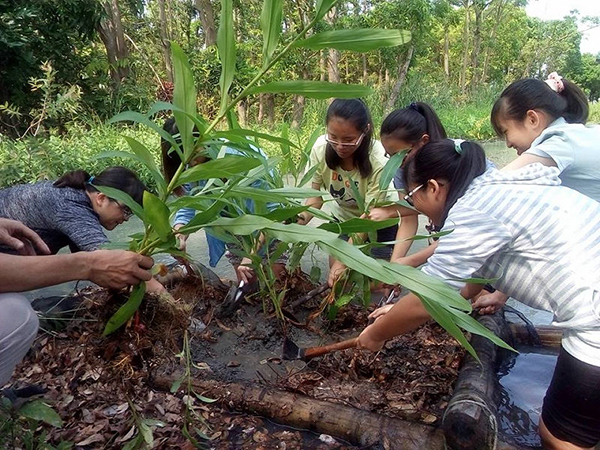 |
| The teacher explained to us the plants on the floating island. The plants in the teacher's hands are ginger lilies. |
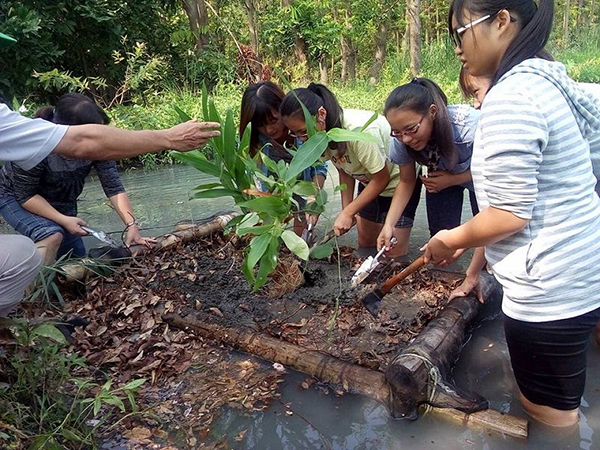 |
| We work together to grow the plants on the floating island |
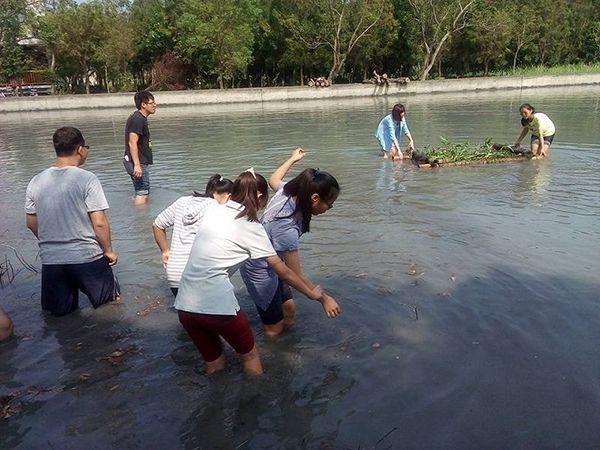 |
| The floating island is launched |
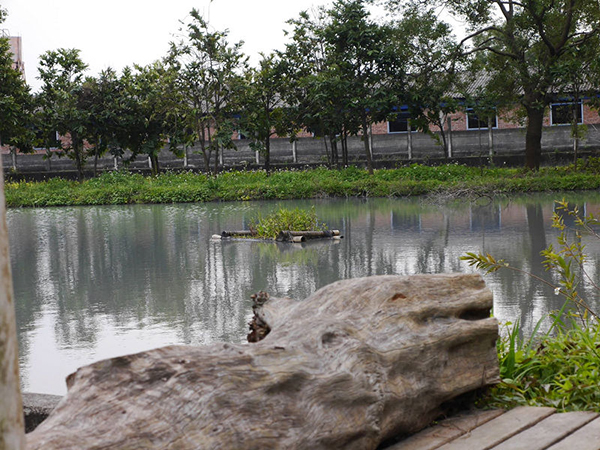 |
This is a picture of the floating island after 2 months! The plants grow well.
It's a pity that it's not blooming period otherwise it must be beautiful. |
Finally, we understood Mr. Cheng Wu's hard work of planting trees together with this group of young people who like to protect Taiwan's natural ecology. It is not easy to take care of trees from small saplings to big trees. His work is admired. Although we only went to visit for half a day, our harvests are very rich! |
| TOP |
|
Copyright © 2019 Si-Yang Junior High School
No.1, Xiagan Rd., Xizhou Township, Changhua County 524, Taiwan (R.O.C.)
TEL:04-8802151 FAX:04-8803142 |
|
|
|
